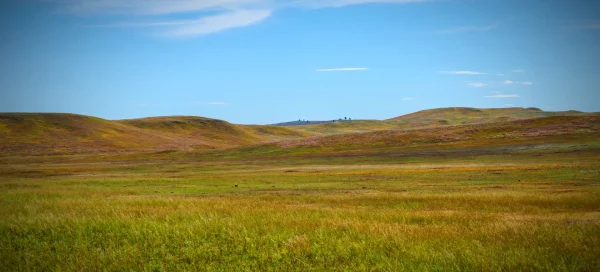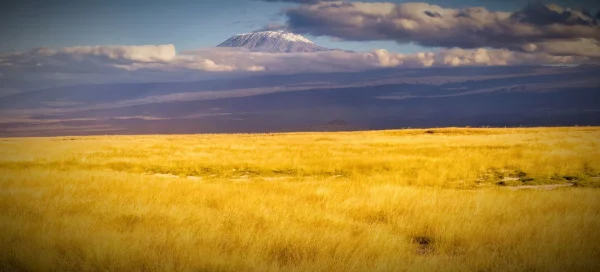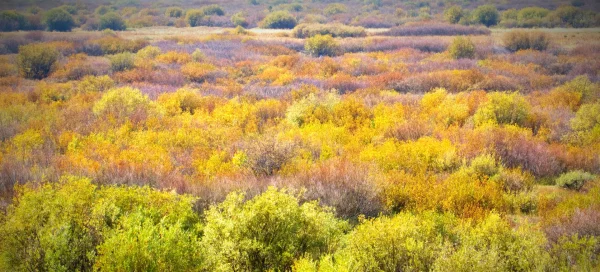Overview
The Eastern Towhee (Pipilo erythrophthalmus) is a large sparrow native to the eastern United States. It is instantly recognizable by its striking plumage and vibrant calls. Males are particularly notable for their black upperparts and tails, contrasting sharply with their white bellies and rufous flanks. Females share a similar pattern but are generally brown, whereas the males are black, offering a more subdued yet equally distinctive appearance. Both sexes boast bright red eyes, contributing to their scientific name, erythrophthalmus, meaning “red-eyed.”
Eastern Towhees inhabit brushy and edge habitats, including thickets, forest edges, and overgrown fields. They are ground-dwellers, often seen scratching at the leaf litter with a characteristic two-footed hop and kick to uncover food. Their omnivorous diet consists of insects, seeds, and fruits, adapting seasonally to available resources. The bird’s song, a clear and emphatic “drink your tea!” echoes through their habitats, a familiar sound of the underbrush.
Eastern Towhees are bold in coloration and voice despite their somewhat secretive nature. They play a significant role in the ecosystem as predators of insects and prey for larger birds and mammals. Their presence indicates healthy, dense underbrush habitats essential for the survival of many species. Conservation efforts focus on preserving these natural brushy landscapes to ensure the Eastern Towhee and similar species continue to thrive.
Taxonomy
Kingdom
Phylum
Class
Order
Family
Genus
Species
Sub Species
Type
Physical Description:
Eastern Towhees are robust, large sparrows, measuring approximately 6.8 to 8.3 inches long and 8 to 11 inches wingspan. Their size and striking plumage make them one of the more easily identified sparrows. Males are characterized by their black heads, backs, and tails, contrasting with white bellies and rufous sides. Females, while similar in pattern, display a rich brown color, whereas the males are black, blending more subtly with the underbrush.
Eastern towhees’ red eyes are distinctive, standing out against their darker plumage and adding to their striking appearance. The birds’ tails are long and rounded, with white corners that are particularly noticeable in flight. Their strong, rounded wings reflect their adaptation to quick, burst-like flights through dense vegetation. Their physical attributes aid their survival within brushy habitats and make them a fascinating subject of study for ornithologists and bird watchers.

Lifespan: Wild: ~4 Years || Captivity: ~12 Years

Weight: Male & Female: 1.1-1.9 ounces (32-53 g)

Length: Male & Female: 6.8-8.3 inches (17-21 cm)

Wingspan: Male & Female: 8-11 inches (20-28 cm)
Characteristic:
Native Habitat:
Eastern Towhees are found throughout the eastern United States, from Maine south to Florida and west to the central United States. Their preferred habitats include dense shrubbery, forest edges, overgrown fields, and gardens, where thick underbrush provides necessary cover and feeding opportunities. These birds are adaptable and can thrive in various environments as long as dense ground cover is available for nesting and foraging.
Their breeding habitat often consists of open woodland or scrubland, where they can find suitable nesting sites near the ground. Eastern Towhees are year-round residents in the southern part of their range, but those in the northern areas may migrate south for the winter, seeking warmer climates and more abundant food sources.
Climate Zones:
Biogeographical Realms:
Continents:
Countries:
Diet:
Diet & Feeding Habits:
Eastern Towhees have an omnivorous diet that changes with the seasons. In the warmer months, they primarily consume various insects, including beetles, ants, and caterpillars, which provide the high protein content necessary for breeding and growth. During the fall and winter, their diet shifts towards seeds, berries, and fruits, taking advantage of the seasonal abundance of these resources. This dietary flexibility allows them to exploit different food sources throughout the year, adapting to the changing availability of nutrients in their environment.
Their foraging technique is distinctive, often described as a two-footed backward hop and scratch, which serves to uncover hidden food items beneath leaf litter and ground cover. This behavior is a hallmark of their feeding strategy, making them a common sight for those who enjoy watching ground-level birds. Eastern Towhees may also visit backyard feeders, especially those that offer sunflower seeds, millet, or cracked corn placed on or near the ground.
Mating Behavior:
Mating Description:
Eastern Towhees are generally monogamous, with pairs forming during the breeding season. Males attract females through their striking appearance, elaborate displays, and complex songs. The breeding season typically begins in early spring and can extend into summer, depending on geographical location. The females construct nests and are usually placed on the ground or low in bushes, made from grass, leaves, and stems and lined with finer materials.
Females lay 2 to 6 eggs per clutch, which they incubate for about 12 to 13 days. The chicks are altricial, requiring care and feeding by both parents until they fledge at about 10 to 12 days old. Eastern Towhees may raise one or two broods annually, depending on environmental conditions and availability of food. The success of their reproductive efforts is closely tied to the quality of their habitat, particularly the availability of dense underbrush for nesting and foraging.
Reproduction Season:
Birth Type:
Pregnancy Duration:
Female Name:
Male Name:
Baby Name:
Social Structure Description:
Eastern Towhees exhibit a territorial social structure during the breeding season, with males defending their territories through vocal displays and physical posturing. Outside the breeding season, they may form loose flocks, often with other species, to forage together. This flocking behavior provides safety in numbers and increases foraging efficiency, demonstrating Eastern Towhee’s adaptability to different social and environmental conditions.
Their ability to navigate and thrive in various social arrangements highlights the complexity of Eastern Towhee’s behavior and the importance of preserving the diverse habitats that support these dynamic social structures.
Groups:
Conservation Status:
Population Trend:
Eastern Towhees are relatively common throughout their range, though localized declines have been noted in areas where habitat loss and fragmentation are prevalent. Urbanization, agricultural development, and the loss of underbrush habitats through overzealous land management practices pose significant threats to their populations. Despite these challenges, Eastern Towhees have shown resilience by adapting to various habitats, including suburban areas with suitable environments.
Monitoring and research efforts are crucial to understanding the dynamics of Eastern Towhee populations and the effects of environmental changes on their distribution. Conservation initiatives that focus on preserving and restoring natural habitats, particularly those that provide dense underbrush and edge habitats, are essential for the long-term viability of Eastern Towhee populations.
Population Threats:
The primary threats to Eastern Towhees include habitat loss, degradation, and fragmentation, primarily due to urban and agricultural development. Reducing and edge habitats through land clearing and managing forests and fields can significantly impact their nesting and foraging areas. Additionally, the use of pesticides can reduce the availability of insects, an important food source during the breeding season.
Climate change also poses a potential threat, as shifts in temperature and precipitation patterns could alter the availability of suitable habitats and affect the timing of breeding and migration. Predation by domestic cats and collisions with windows are significant mortality factors for Eastern Towhees, especially in suburban and urban areas.
Conservation Efforts:
Conservation efforts for Eastern Towhees focus on habitat preservation and restoration. Protecting areas with dense underbrush and promoting land management practices that maintain early successional habitats are crucial for their survival. Encouraging the growth of native plants and shrubs in suburban and rural landscapes can also provide essential habitats for these birds.
Educational programs to reduce threats from domestic cats and make windows safer for birds can help mitigate some of the direct human impacts on Eastern Towhee populations. Citizen science projects, such as bird counts and habitat monitoring, play a vital role in tracking population trends and the effectiveness of conservation measures.
Additional Resources:
Fun Facts
- The Eastern Towhee’s call, often described as sounding like “drink your tea!” is a distinctive and well-known bird song.
- They are one of the few bird species where the female’s song can be as complex and vibrant as the male’s.
- Eastern Towhees have a unique foraging method, using a two-footed backward hop to uncover food.
- They are sometimes called “ground robins” because of their size and ground-feeding habits.
- The species was once considered the same as the Spotted Towhee of the western United States, collectively known as the Rufous-sided Towhee.
- Eastern Towhees can hybridize with Spotted Towhees, where their ranges overlap, creating interesting variations in plumage.
- The Eastern Towhee’s red eyes are a striking feature not commonly found in many bird species.
- They can re-nest multiple times within a single breeding season if necessary.
- Eastern Towhees use dust baths as part of their grooming behavior, which helps maintain their plumage.
- Despite their preference for dense underbrush, Eastern Towhees can become quite bold in suburban settings, often visiting feeders if ground food is available.














